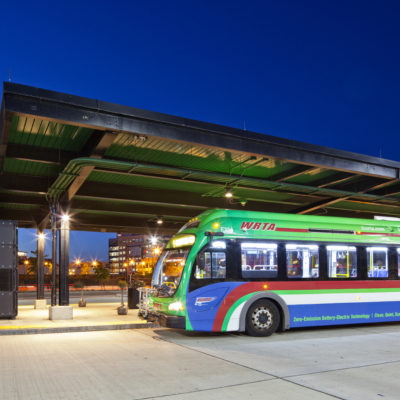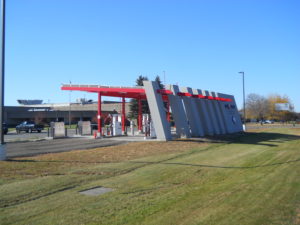
Transit agencies transition from traditional diesel bus fleets to fleets powered by alternative fuels because these vehicles offer improved operational efficiencies, reductions in the carbon footprint, and a reduction in daily operating costs.
Not only are alternative fuel powered buses more efficient, their use improves the perception of bus transit in the cities and communities in which they operate. Today’s fully electric-powered vehicles save on fuel costs and emit no particulate matter, nitrogen oxides, or carbon dioxide. This makes them especially suitable for use in densely populated urban environments and are available in more weight-classes and applications than ever before. CNG buses also have proven successful in reducing fuel costs and carbon emissions. Compressed natural gas is one of the cleanest-burning alternative fuels available with near-zero emissions.
While most fleet operators understand the benefits of switching to alternative fuels, many operators are not experienced with the facility, site, and safety requirements necessary to fuel, store and maintain the new buses. Read on for some key considerations that will help as you plan the fueling and maintenance facilities for your new alternate power fleet.
Siting Your Fueling Facility
Here are a few things to consider when siting your fueling or charging station:
Common Fuel Considerations:
- Service and maintenance requirements
- Understand your current bus movements and how they could be impacted by vehicles needing alternative fuel
- Planning for operational impacts
- Option to fuel onsite and/or offsite
- Public understanding of the proposed operations
- Creating a partnership with local fire departments and emergency responders
- Need for safety training
Additional CNG Considerations:
- Need for adequate NG supply and pressure
- Do you want/need to provide public fueling
- Is indoor fueling a requirement
- High rate of fill (Fast fill) vs low rate of fill (Time fill)
- Regulations on defueling (Prior to maintenance)
- Noise assessment (CNG Compressors, dryers)
Additional Electric Considerations:
- Potential utility upgrades and demand charges
- Noise assessments, electric generators
- Remote charging stations and locations
A Public and Private Fueling Station
For a recent fueling station project for Metro Bus in St. Cloud, MN, the agency selected an initial outdoor location on the site close to the existing diesel fueling lanes for both the public and private fueling stations. The decision to include private and potential public fueling opportunities on a limited site footprint required the agency to conduct a thorough site review process.

Sensing that the originally selected location could be problematic, an “immersion process” assessed the pros and cons of that location, additional options for site layout, and addressed engineering and life safety considerations. This process brought the stakeholders and end users together to voice their needs, concerns, and issues before the start of design. This process was extremely beneficial and convening this discussion right at the project site enabled the team to collect and discuss programming information in real time.
What Are the Options for Indoor Fueling?
Indoor fueling facilities are rare in the industry. The capital costs associated with the mitigation measures required to comply with current codes for compressed natural gas indoor fueling are high. While an advantage, especially in the harsh northern climates, the cost to retrofit facilities to meet current code levels can be prohibitive. Implementing an indoor fueling option on a new facility is much less costly, but it still carries a premium.
Aesthetics and Functionality
Worcester Regional Transit Authority Hub at Unation. Electric Bus Charging Station and Passenger Boardg Area.
Metro Bus chose a fueling station location that was the best fit for their current bus movement. The components of the project included a compressor island, public and private fast fill fueling stations, and a dramatic canopy facing the interstate. The canopy design provides a “billboard or front door sign” for the bus company and helps to advertise the public CNG fueling option.
Final Considerations
When considering an alternative fuel strategy keep in mind the potential impact of this decision in five major areas of your operation: 1) the vehicles, 2) the fueling infrastructure, 3) the maintenance facility requirements, 4) the operator, and 5) maintenance training required. A successful alternative fuel program should thoroughly evaluate and plan for each of these five components. All too often one or more of these components are overlooked and the impact to the overall program can be significant.
Planning Your Facility
In view of the fact that alternative fuels are here to stay, it is important that transit agencies and operators build on the lessons learned of other agencies and seek to gain a full understanding of the issues and benefits of incorporating alternative fuel vehicles into their fleets. There’s no need to reinvent the wheel as you can easily build on the experiences of other agencies and designers who have already tackled these problems.
Written for BusRide Magazine by:
John Havrilla, PE, Director of Alternative Fuel Services. Contributing Author: Philip D. Muse, AIA, NCARB, LEED AP BD,+C.
You can reach John at jhavrilla@wendelcompanies.com.
